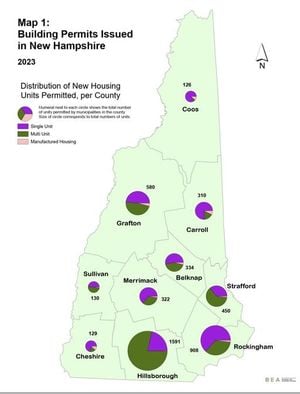Significant council tax increases are expected across England and Wales, with many councils poised to agree on nearly five percent rises as they grapple with budget constraints. According to draft budget planning documents, households could see their council tax bills surpass £2,000 annually. This anticipated financial burden is set against the backdrop of underfunding from previous governments, leaving local authorities with tough decisions to make.
Leading the charge are boroughs like Haringey, which faces unique challenges. The council has pointed out its struggle to receive adequate funding—outer London-level funding for areas of inner London need. Haringey is seeking £37 million from the government for exceptional financial support to maintain day-to-day services and adequately care for vulnerable residents. Without this assistance, the council fears it will have no choice but to target the poorest residents to meet budget shortfalls.
The financial realities facing Haringey echo the sentiments expressed by Greenwich leader Anthony Okereke, who commented, "Our draft budget serves as a stark reminder of the financial realities created by decades of underfunding by the previous government. This damage cannot be done overnight." He also mentioned the municipality's improved financial settlement this year, which offers some hope toward maintaining and improving services.
Across London, 15 boroughs have already broken the £2,000 mark for average council tax bills for band D properties. These boroughs include Barking and Dagenham, Bexley, Brent, Camden, Croydon, Enfield, Harrow, and others. For the first time, councils such as Greenwich, Hounslow, Merton, and Islington are also likely to cross the £2,000 mark, imposing additional financial pressures on their residents.
Residents will feel the impact significantly, especially as typical payment schedules for council tax usually see households paying over ten months. With bills averaging around £200 per month, this increase disproportionately affects lower-income households, raising concerns within community advocacy groups.
Several councils have already shared their budget proposals, which typically reflect about a two percent increase allocated to adult social care and another 2.99 percent hike for council services. This combination equates to almost 4.99 percent overall, pushing the financial limits of many households.
The increase has led some local councils to engage in difficult discussions about austerity measures, including rising costs for adult social care and homelessness, as seen with Havering's statement about unavoidable cuts to services, including plans to close three libraries to save £288,000 annually. These tough choices indicate the harsh reality many local councils face amid spiraling costs.
Residents across all boroughs are already bracing for discussions at their local council meetings as the decision process moves forward. The updated council tax tables will be published as these councils finalize their budgets over the upcoming weeks.
These council tax increases come at a time when local authorities are also focused on innovatively managing services to mitigate costs effectively. Even though councils are receiving additional funding, it often falls short of addressing the looming deficits and demands within communities.
With the average total of council tax bills expected to increase significantly, residents will need to prepare for these upcoming expenses and the accompanying community services they hope to retain. Now more than ever, the efficiency and effectiveness of local councils will be under examination as they navigate the treacherous waters of budgeting amid financial constraints and societal needs.



